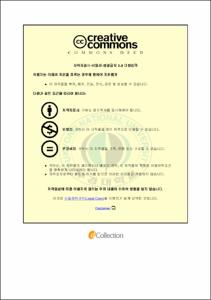원심형 오일정화기에서의 유동 및 입자거동 특성
- Abstract
- The centrifugal oil purifier is used in ships for purifying the engine lubrication oil. The momentum needed for the rotation of the cylindrical chamber in this research is obtained by jet injections. The dust particles in the oil are separated by the centrifugal forces moving to the inner wall of the rotating cylindrical chamber body. The dust particles are eliminated when the particles are adsorbed onto the surface of the inner wall of the chamber body.
To improve the filtrating efficiency of the centrifugal oil purifier, we investigated the following research. First, the flow characteristics and the physical behaviours of particles in this centrifugal oil purifier have been investigated numerically and the filtration efficiencies have been evaluated along the various variables (particle size and density of the impurities, rotating speed of oil purifier). And, as a parametric study, It has been investigated the filtrating efficiency by change of inlet, outlet position and the number of blades to enhance rising current of flow. For the numerical calculations, SST k-ω turbulence model has been adopted. The MRF(Multiple Reference Frame) method has been introduced to consider the rotating effect of the flows. At the case under various variables, such as particle size, particle density and rotating speed, the filtration efficiencies have been evaluated. The results are as follow. It has been verified that the filtration efficiency is increased with the increments of the particle size, the particle density and the rotating speed of the centrifugal oil purifier. And the 8 blade model shows the highest filtrating efficiency among three cases(4, 8, 12 blade model) along the all particle sizes. However, the differences of the efficiencies become small over the size 50 μm, which implies that the effects of the blade number to the efficiency is not seen any more over a certain number of blades.
The filtration efficiency under 20 μm is reported about 20 %(4 and 12 blade model cases). To improve this filtration efficiency under 20 μm, new research method is needed. The momentum for going to the outer wall decreases as the size of particles decreases. So, particles do not overcome the big pressure difference between the outer wall and axis. For decreasing the pressure difference, the new method we adopted is to control the centrifugal force by changing the mechanism of rotating system. We adopted three models which are fully rotating system (case 1), outer wall rotating system (case 2) and axis rotating system (case 3). As the result, It was found that centrifugal force is the key factor to control pressure differences between the outer wall and center axis. The pressure difference of case 1 is more 10 times higher than case 2 and case 3. Also, the filtration efficiency of case 2 and case 3 have about 2 times higher than case 1.
- Issued Date
- 2015
- Awarded Date
- 2015. 2
- Type
- Dissertation
- Publisher
- 부경대학교 대학원
- Affiliation
- 부경대학교 대학원
- Department
- 대학원 에너지시스템공학과
- Advisor
- 이연원
- Table Of Contents
- Abstract ⅲ
List of Tables ⅴ
List of Figures ⅵ
제 1 장 서 론 1
1.1 연구 배경 1
1.2 연구목적 및 연구방법 7
제 2 장 이론 및 수치해석 8
2.1 난류 모델 8
2.2 Multiple Reference Frame(MRF) Method 12
2.3 원심정화기 이론 15
제 3 장 CFD에 의한 원심오일정화기의 성능해석 27
3.1 연구개요 27
3.2 해석모델 및 해석방법 30
3.3 해석 결과 36
3.4 결과 요약 41
제 4 장 여과효율 개선을 위한 Parametric Study 42
4.1 연구개요 42
4.2 Parametric Study 43
4.3 결과 요약 66
제 5 장 원심력 제어를 통한 여과효율 분석 68
5.1 연구개요 68
5.2 해석모델 및 연구방법 72
5.3 수치해석 결과 75
5.4 결과 요약 82
제 6 장 결론 83
참 고 문 헌 85
연구 업적 93
- Degree
- Doctor
- Files in This Item:
-
-
Download
 원심형 오일정화기에서의 유동 및 입자거동 특성.pdf
기타 데이터 / 2.86 MB / Adobe PDF
원심형 오일정화기에서의 유동 및 입자거동 특성.pdf
기타 데이터 / 2.86 MB / Adobe PDF
-
Items in Repository are protected by copyright, with all rights reserved, unless otherwise indicated.